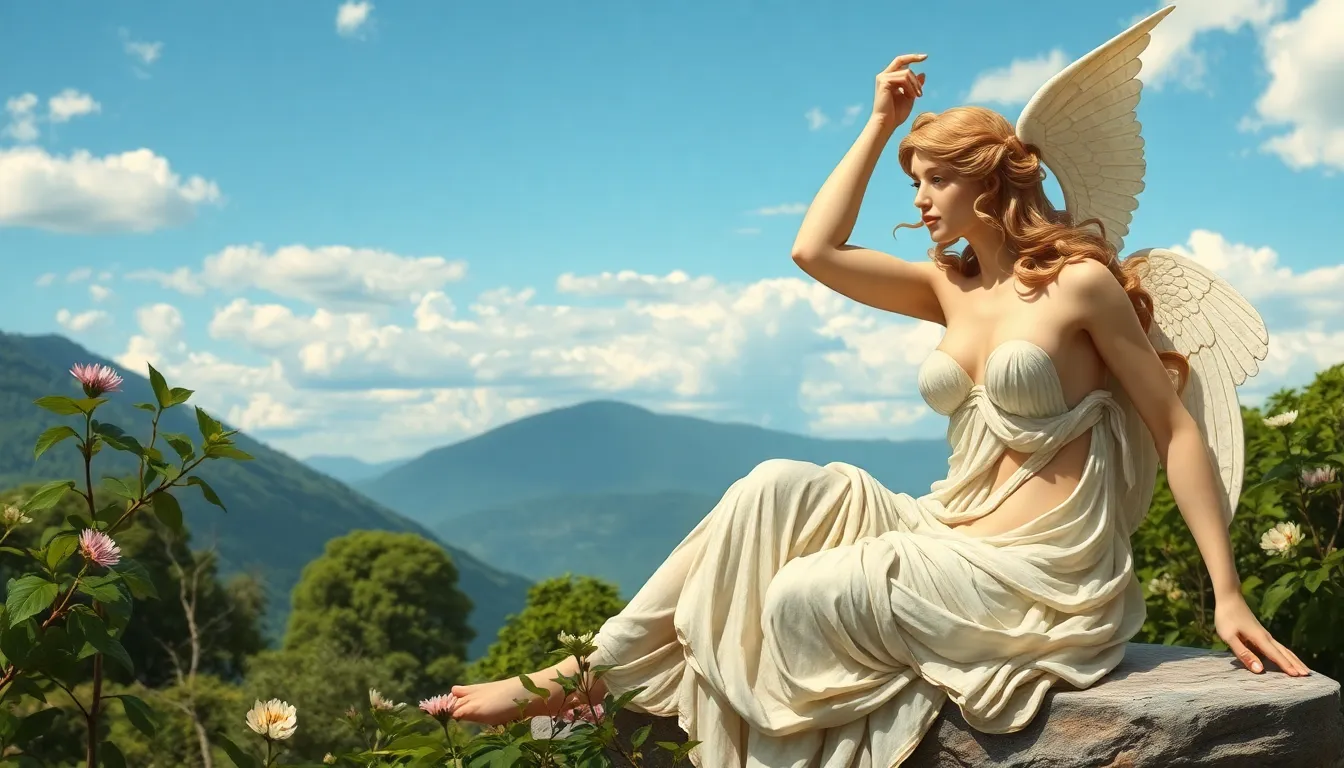The Impact of Nymphs on Ancient Greek Poetry: Celebrating Beauty and Nature
I. Introduction
Nymphs are enchanting figures in ancient Greek mythology, often depicted as beautiful maidens associated with various natural elements. They embody the spirit of nature, representing rivers, trees, and mountains, and serve as symbols of fertility and the natural world. Their significance in ancient Greek poetry is profound, as poets often drew inspiration from their beauty and the serene landscapes they inhabited.
This article aims to explore the influence of nymphs on ancient Greek poetic themes, examining their roles, representations, and the broader implications of their presence in literary works.
II. The Role of Nymphs in Greek Mythology
Nymphs are classified into various types, each associated with different elements of nature:
- Naiads: Freshwater nymphs associated with springs, rivers, and lakes.
- Dryads: Tree nymphs, particularly connected to oak trees, representing the vitality of forests.
- Oceanids: Sea nymphs, daughters of the sea god Oceanus, embodying the vastness of the ocean.
- Nereids: Sea nymphs known for their beauty and helpful nature, often accompanying Poseidon.
Nymphs are not only symbols of beauty and nature but also integral to the stories of gods and mortals. They often engage in relationships with gods, such as Zeus and Apollo, and with mortal heroes, demonstrating their role as both divine and terrestrial beings.
III. Nymphs as Muse Figures in Poetic Tradition
The concept of the muse in Greek literature is closely tied to inspiration and creativity. Nymphs often serve as muses, inspiring poets to explore themes of love, beauty, and nature. Their ethereal qualities and connection to the natural world make them perfect embodiments of poetic inspiration.
Prominent poets inspired by nymphs include:
- Hesiod: His works often feature nymphs as embodiments of the earth’s bounty.
- Virgil: In his pastoral poetry, nymphs inspire themes of rural beauty and harmony.
- Theocritus: His Idylls celebrate nymphs and their relationship with shepherds, blending human emotion with nature.
Nymphs represent the ideal of creative inspiration, urging poets to delve into the complexities of beauty and nature.
IV. Themes of Beauty and Nature in Nymph-Inspired Poetry
The presence of nymphs in poetry often leads to a celebration of natural landscapes and ecosystems. Poets use nymphs to convey the beauty of their surroundings, emphasizing the delicate relationship between nature and human emotions.
Key themes include:
- The celebration of natural landscapes: Poets often describe the idyllic settings where nymphs dwell, such as lush forests and serene rivers.
- The interplay between human emotions and the beauty of nature: Nymphs often reflect the inner feelings of characters, serving as metaphors for love, desire, and longing.
- Nymphs as embodiments of idealized femininity and beauty: Their enchanting presence represents the pinnacle of beauty, often contrasting with the harsh realities of human life.
V. Case Studies of Prominent Works Featuring Nymphs
Several key works in ancient Greek literature prominently feature nymphs, highlighting their significance in poetic tradition.
A. Analysis of Homer’s “Hymn to Aphrodite”
In this hymn, nymphs play a role in depicting the beauty and allure of Aphrodite, the goddess of love. Their presence enhances the themes of romance and desire, showcasing the intertwining of divine and mortal realms.
B. Exploration of Theocritus’ Pastoral Poetry
Theocritus’ Idylls are rich with nymph imagery, depicting their interactions with shepherds and the pastoral landscape. His poetry celebrates the harmony between human life and nature, illustrating how nymphs inhabit and enhance the beauty of the rural setting.
C. Examination of Ovid’s Metamorphoses and Nymph Representation
In Ovid’s work, nymphs often undergo transformations, symbolizing the fleeting nature of beauty and love. Their stories reflect the complexities of desire and the often tragic consequences of human emotions, emphasizing the dual nature of beauty as both enchanting and ephemeral.
VI. The Evolution of Nymph Imagery in Later Poetic Traditions
The influence of nymphs extends beyond ancient Greece, shaping Hellenistic and Roman poetry. Their symbolism evolved, adapting to new cultural contexts while retaining core themes of beauty and nature.
Key developments include:
- Influence on Hellenistic and Roman poetry: Poets like Virgil and Ovid integrated nymphs into their works, expanding their roles and significance.
- Transition of nymph symbolism into the Renaissance: Renaissance poets reimagined nymphs, often portraying them as symbols of love and beauty in an era that celebrated humanism.
- Nymphs in modern interpretations: Contemporary poetry continues to draw on nymph imagery, exploring themes of nature, femininity, and the human experience.
VII. The Cultural Significance of Nymphs in Ancient Greek Society
Nymphs held a prominent place in ancient Greek culture, representing fertility and the natural world. Their significance extended beyond mythology into the fabric of society.
Key aspects include:
- Nymphs as representations of fertility: They were often associated with agricultural cycles and the bounty of the earth.
- Their role in rituals and festivals: Nymphs were venerated in local cults and festivals, signifying the importance of nature in religious practices.
- The reflection of societal values through nymph mythology: Nymphs embody ideals of beauty, harmony, and the connection between humanity and nature, reflecting the values of ancient Greek society.
VIII. Conclusion
The impact of nymphs on ancient Greek poetry is profound, serving as symbols of beauty and nature that resonate throughout literary history. Their roles as muses and embodiments of idealized femininity have left a lasting legacy in literature and culture.
As we reflect on the significance of nymphs, we recognize their enduring influence, inspiring contemporary discussions on beauty, nature, and the human experience.




